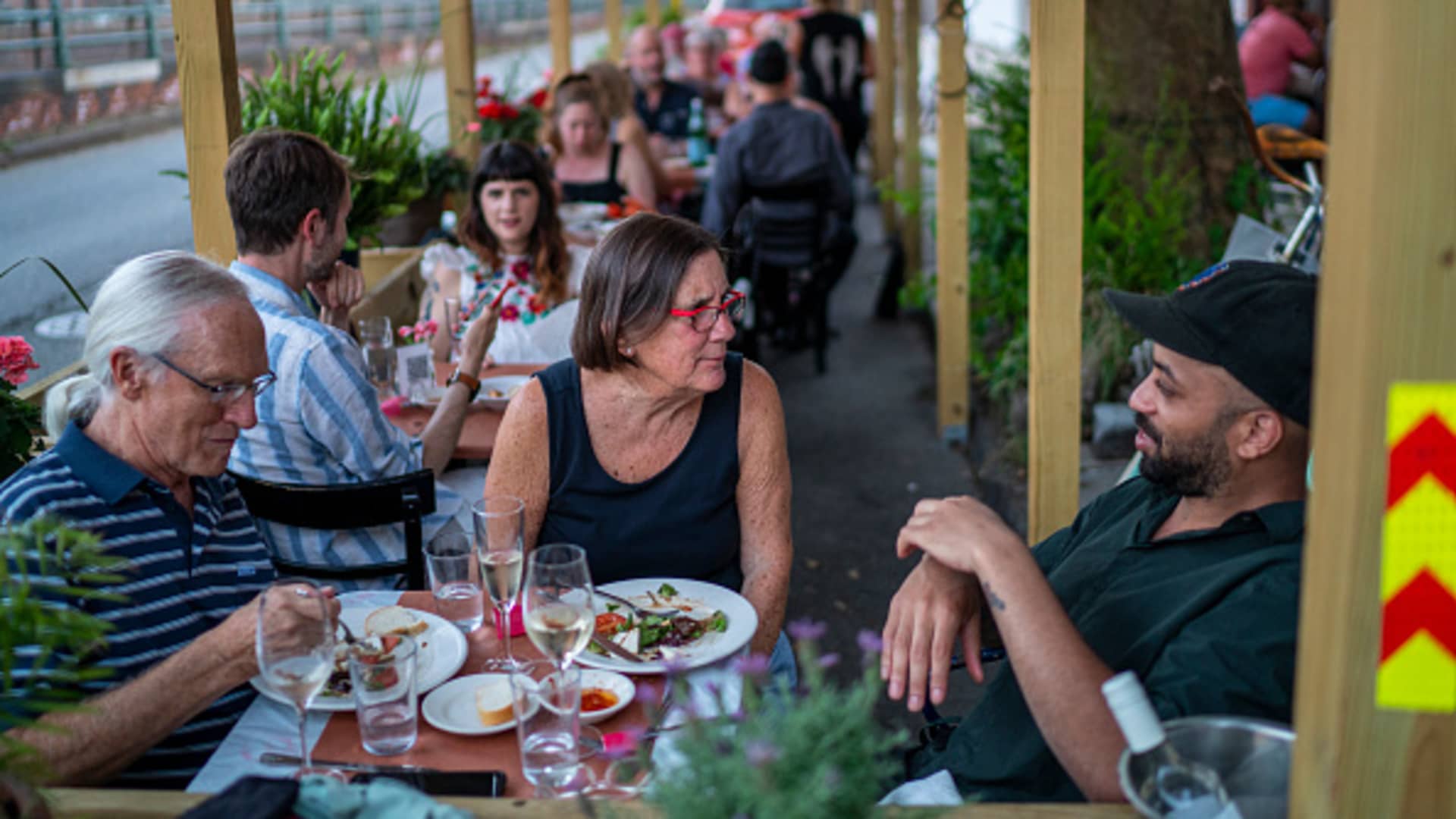
People sit outdoors at the Petite Crevette Restaurant on June 05, 2021 in the Brooklyn borough of New York City.
Robert Nickelsberg | Getty Images
During the Great Recession, consumers hunted for bargains, trading down to cheaper restaurants or picking the least expensive menu options.
But today, as inflation puts pressure on their wallets, consumers are more likely to cut back on their restaurant visits instead to preserve their budgets, according to a report from AlixPartners.
The cost of eating out has been rising for more than a year. In March, for the first time since inflation began accelerating in mid-2021, prices for meals eaten away from home rose faster than prices at grocery stores.
In April, prices for food away from home rose 8.6% compared with the year-earlier period, according to the Bureau of Labor Statistics. Prices for food at home climbed 7.1% during the same period.
In response, diners have been visiting restaurants less frequently. In April, traffic at restaurants open at least a year fell 3.5% compared with a year earlier, according to Black Box Intelligence data.
In a survey conducted by AlixPartners in December, 74% of respondents said they planned to reduce dining out. Just 39% said they would choose less expensive restaurants. Those surveyed could choose more than one option.
Back in January 2009, just 12% of respondents said they would eliminate or reduce visits to cut back on their restaurant spending.
“History would tell you that people just trade down but continue to eat out as much,” said AlixPartners Managing Director Andrew Sharpee.
But in the decade and a half since the financial crisis, consumers have changed. The pandemic made many people more comfortable cooking at home. Sharpee said he thinks that consumers will budget their restaurant spending for experiences that can’t be replicated at home, rather than trading down from casual dining to fast food.
“What you’re going to see now is winners and losers across the board,” he said.
Young consumers, in particular, are cutting back their takeout and food-delivery orders but still plan to dine in person, according to the report. Delivery orders are usually more expensive because of the associated fees and sometimes higher prices for the food itself, to offset the commission fees that the restaurants have to pay.
“Delivery has just gotten too expensive,” Sharpee said.
First Watch Restaurant Group said in early May that its customers haven’t been ordering their meals as often through third-party delivery services.
For its part, DoorDash is starting to push back against inflated delivery prices by giving eateries with the same delivery and in-store pricing more favorable placement in its app.
The shifts in consumer spending showed up in other restaurant companies’ quarterly earnings. El Pollo Loco, Domino’s Pizza and Outback Steakhouse owner Bloomin’ Brands were among the companies that reported declining traffic in the U.S., even though they faced easy comparisons to last year’s metrics, when the Covid omicron outbreak hurt industry sales.
But some restaurants have insisted they haven’t seen any significant changes. Starbucks said its customers haven’t been trading down or spending less at its cafes. And Josh Kobza, chief executive of Burger King owner Restaurant Brands International, said Tuesday the company hasn’t seen a major shift in its business.
“You can have some folks who are existing customers who trade down, but we also probably benefit from a certain trade down into the category. It’s hard to pull these two dynamics apart too much, but we haven’t seen a huge shift in the business that we could attribute directly to inflation,” Kobza said at Bernstein’s Annual Strategic Decisions Conference.
The companies that have seen changes to consumer behavior are switching up their strategies. Chipotle Mexican Grill, for example, plans to pause price hikes unless inflation heats up again.
Elsewhere, Chili’s parent Brinker International is phasing out its Maggiano’s Italian virtual brand, which was only available for delivery orders. And Noodles & Company is leaning into its value offerings.







